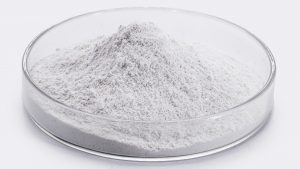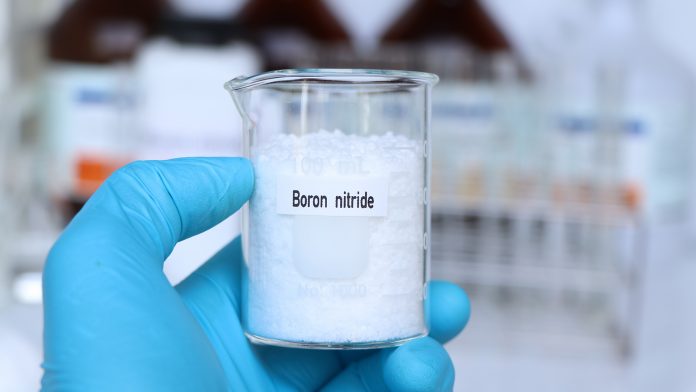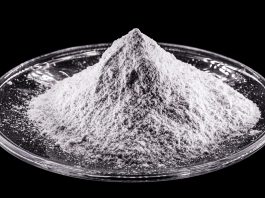The transformation of the electric vehicle (EV) industry is marked by several innovations, among which the utilisation of boron nitride (BN) stands out due to its profound implications on vehicle design.
Boron nitride is a synthetic ceramic compound characterised by its exceptional thermal conductivity, high dielectric strength, and notable lubricity, and it has found many applications within the EV landscape.
From enhancing the thermal management of plastic components to acting as a protective agent during high-temperature manufacturing processes, BN’s versatility is redefining the production trajectory of electric vehicles.
However, the full extent of BN’s impact on the EV industry remains a subject of interest as stakeholders continue to investigate its potential in optimising safety, performance, efficiency, and longevity in sustainable transportation.
Innovation News Network explores how the journey of boron nitride, from concept to reality, shapes the future of electric vehicles.
What is boron nitride and what are its benefits?
BN stands out due to its unique hexagonal lattice structure akin to graphite, yet boasting properties that outperform many other electric vehicle materials. Composed of boron and nitrogen atoms, boron nitride’s thermal conductivity, inertness, high dielectric strength, and lubricity make it a preferred choice for various applications in electric vehicles.
Its utility in the EV sector is vast, finding use as a thermally conductive filler in plastic components, a coating for superplastic forming of aluminium autobody panels, and a non-stick protection release agent during high-temperature manufacturing.
It is also employed as a solid in high-temperature insulator caps on wiring, contributing to the safety and efficiency of these vehicles. Boron nitride is also instrumental in EV battery manufacturing due to its non-reactive nature.
The compound’s wide-ranging capabilities and its pivotal role in enhancing the performance and lifespan of electronic components make BN an indispensable asset in the EV industry.
The use of BN in electric vehicles
BN is used as a thermally conductive filler in various plastic components, including encapsulation resin, thermal interface materials (TIMs), and thermoplastic composites, enhancing the performance and lifespan of these components.
BN is also employed as a coating for the superplastic forming of aluminium autobody panels. This is crucial in lightweight EVs and as a non-stick protection release agent during high-temperature manufacturing.

In addition, BN is used as a solid in high-temperature insulator caps on wiring and in the manufacturing process of EV batteries due to its non-reactivity with many elements used in battery production.
Heat management with BN powders
In the context of electric vehicles, boron nitride powders are critical in managing heat, effectively enhancing the performance and lifespan of various components.
As a thermally conductive filler, boron nitride (BN) powders are utilised in multiple areas, from the encapsulation resin and thermal interface materials to thermoplastic composites.
The powder’s exceptional thermal conductivity efficiently dissipates heat, ensuring the safe and reliable function of power electronics, charging systems, and LED lighting.
BN powders are also critical in the thermal management of electric vehicle battery assembly, where they serve as a leading filler. This assists in improving the thermal performance of thermal interface materials between cells and the battery pack.
It is also used in thermoplastics for casing, providing thermal runaway and flame retardancy, which enhances safety and extends the battery’s lifespan.
The unique properties of BN powders, notably their high thermal conductivity, inertness, and electrical insulation capabilities, make them an indispensable material in the electric vehicle industry, contributing to better performance, safety, and longevity of the vehicles.
Applications of boron nitride as filler
Boron nitride is integrated into numerous plastic components like encapsulation resin, thermal interface materials (TIMs), and thermoplastic composites as a thermally conductive filler.
Such applications enable efficient heat dissipation, enhancing the performance and longevity of electronic components.
BN’s thermal conductivity and its electrical insulation properties make it invaluable in EV electrical systems, including power electronics, charging systems, and LED lighting.
It also improves the thermal performance of insulating components in electric motors, contributing to their efficiency and durability. BN is used as a filler in battery assembly, enhancing thermal performance and aiding in thermal runaway and flame retardancy.
Furthermore, BN coatings are being explored for the superplastic forming of aluminium bodies, improving EV lightweight.
It also functions as a protective agent in high-temperature manufacturing processes.
With its chemical inertness and high dielectric strength, BN solids are used as insulator caps and electrical isolation barriers, ensuring safety and robustness in EV design.
The role of BN coatings
Boron nitride coatings are actively being researched for numerous uses in this sector.
One of the potential applications is in the superplastic forming of aluminium bodies, assisting in the lightweight of electric vehicles, which can significantly enhance energy efficiency and performance.
These coatings are also beneficial in several upstream manufacturing processes. They serve as a high-temperature, inert release agent, protecting both the equipment and the finished products.
This is critical, because many other materials often fail due to the reactivity of substances commonly used in battery production.
As new applications and benefits of boron nitride coatings continue to be identified, it is clear that this material will play an increasingly crucial role in developing more efficient and sustainable transportation solutions.
Safety measures with BN solids
The high thermal conductivity, inertness, and electrical insulating capabilities of BN solids make them ideal for components like power electronics, battery systems, and insulator caps.
They are also helpful in protecting the intricate interconnected components of the vehicle. Their inertness means they won’t react with other materials, thus maintaining the system’s integrity.

Moreover, boron nitride solids are being used throughout the battery manufacturing process, adding to the safety and performance of electric vehicles.
The role of boron nitride solids in enhancing safety measures cannot be overstated. As we forge ahead with the advancement of electric vehicles, the significance of boron nitride solids will continue to grow.
Boron nitride in upstream manufacturing
In addition to its role in enhancing safety measures, boron nitride also finds extensive application in upstream manufacturing processes of electric vehicles. Its unique properties, such as thermal conductivity, high dielectric strength, and chemical inertness, make it an indispensable material in producing key EV components.
Boron nitride is used as a thermally conductive filler in numerous plastic parts, including encapsulation resin and thermal interface materials. It enhances the thermal performance of these materials and contributes to their longevity and efficiency.
Furthermore, boron nitride is a non-stick protective release agent during high-temperature manufacturing processes.
The role of boron nitride extends to the manufacturing of EV batteries, where it is utilised due to its non-reactive nature, with many elements used in battery production. As a solid, it is used in high-temperature insulator caps on wiring.
The future of BN in electric vehicles
What does the future hold for applying boron nitride in the ever-evolving electric vehicle industry?
As the demand for electric vehicles intensifies, the role of boron nitride becomes increasingly crucial. BN’s unique properties, such as superior thermal conductivity, inertness, high dielectric strength, and lubricity, make it invaluable in EV manufacturing and design.
Given the rapid advancements in EV technology, the applications of BN are expected to diversify and expand. It is anticipated to play a pivotal role in enhancing EVs’ safety, efficiency, and lifespan.
Areas such as power electronics, battery systems, and upstream manufacturing benefit immensely from integrating BN.
Boron nitride’s significant contribution cannot be overstated as the EV revolution charges ahead. It is destined to be an indispensable part of a more efficient and sustainable future of transportation.








